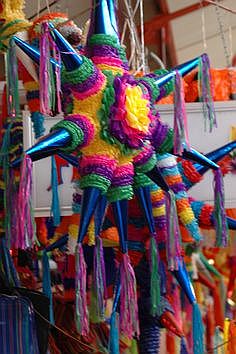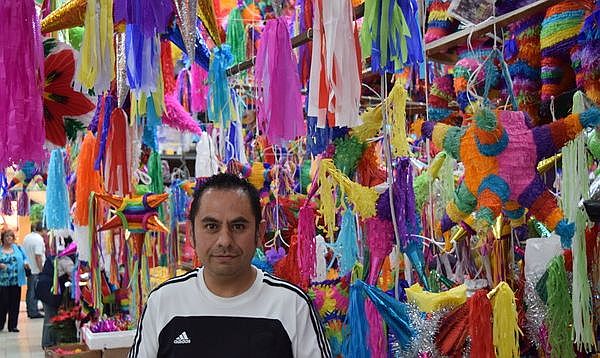Mexico City - It's beginning to look a lot like Christmas in Mexico, but for Joshua Cruz, it's not the parking lots full of pine trees or carols blasting from cafe speakers that put him in the holiday spirit.
"It's not really Christmas time until I'm surrounded by hundreds of [star] piñatas," says the third-generation piñata-maker, who is training his 17-year-old son to one day take the helm of the family business.
 |
The piñata may have originated in China, traveling to Italy, Spain, and eventually Mexico via conquistadors, but it's an object deeply embedded in Mexican culture. The colorful party prop has transformed over the centuries from a Spanish tool for conversion to Christianity into a central part of birthday and other celebrations. But it still holds a special place in Christmas festivities.
Cruz says he sells about 300 piñatas in December alone, when "Posada" revelers traditionally mimic the journey of Mary and Joseph looking for a place to stay in Bethlehem. Typically, friends and family knock on one neighbor's door after another in a processional that ends with food, drink, and piñatas – though sometimes they skip straight to the party.
Ancient tradition meets Christianity
One reason piñatas first resonated here, says Emilo Ortiz Marín at Mexico City's Popular Art Museum, is that indigenous Maya populations had a similar tradition of breaking hanging clay pots before each harvest to guarantee a bountiful crop.
"It was an opportunity to mix indigenous and Western cultures and bring pagan beliefs closer to the church," says Mr. Marín.
The Spanish used the seven-pointed piñata to teach about the seven mortal sins, and to illustrate how good can overcome evil in Christianity, Marín says. People are blindfolded to represent their innocence, then batter devilish temptation until it's destroyed. They're rewarded with the fruits of their faith.
Traditionally, that meant a wellspring of mandarins, sugarcane, peanuts, jicama, and Tejocotes, a tiny fruit similar to crab apples, spilling from a Christmas piñata.
Today, though, you're more likely to find candy and plastic toys – or if you are the sons of piñata-makers, maybe baking flour, laughs Alfonso Lopez, Cruz's older brother, remembering one particularly eventful Christmas Eve celebration. The boys liked to take full advantage of their positions as piñata-making assistants, filling the family's piñatas with bizarre items to play practical jokes and add an extra element of surprise.
Despite their history, "piñatas are now more cultural than they are religious," says Marín.
Read more at csmonitor.com.


